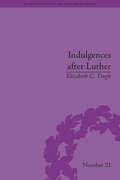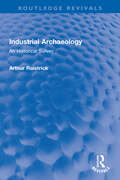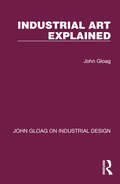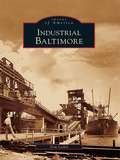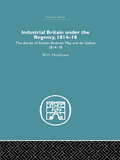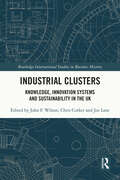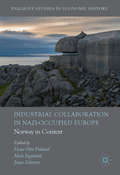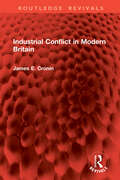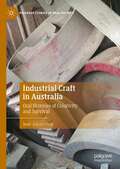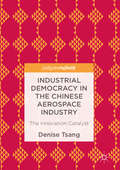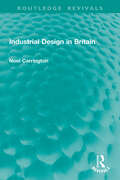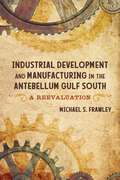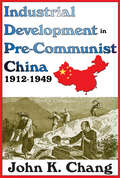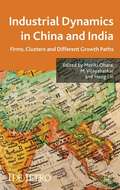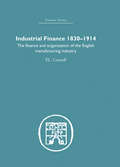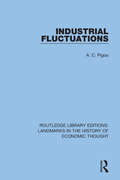- Table View
- List View
Inductive Probability (Routledge Revivals)
by J. P. DayFirst published in 1961, Inductive Probability is a dialectical analysis of probability as it occurs in inductions. The book elucidates on the various forms of inductive, the criteria for their validity, and the consequent probabilities. This survey is complemented with a critical evaluation of various arguments concerning induction and a consideration of relation between inductive reasoning and logic. The book promises accessibility to even casual readers of philosophy, but it will hold particular interest for students of Philosophy, Mathematics and Logic.
Indulgences after Luther: Pardons in Counter-Reformation France, 1520–1720 (Religious Cultures in the Early Modern World #21)
by Elizabeth C TingleIndulgences have been synonymous with corruption in the Catholic Church ever since Martin Luther nailed his ninety-five theses to the church door in Wittenberg in 1517. Tingle explores the nature and evolution of indulgences in the Counter Reformation and how they were used as a powerful tool of personal and institutional reform.
Industrial Archaeology: An Historical Survey (Routledge Revivals)
by Arthur RaistrickIndustrial Archaeology (1972) presents an in-depth investigation of the nature, methods and materials of the archaeology of industry in the UK, from pre-Roman times to the late twentieth century. It studies topics such as coal and lead mining, textiles, wagon-ways and railways, canals, iron, steel and chemicals, glass-making, agriculture, brewing and many other trades, illustrated by a large number of examples (with photographs of many now-demolished sites) from many time periods and regions. It also deals with the role of excavation and field work, the problems of preservation and restoration, and place of various kinds of museum.
Industrial Art Explained (John Gloag On Industrial Design Ser.)
by John GloagOriginally published in 1934 this book became recognised as one of the principal standard works on industrial design and industrial architecture. The chapters explain the complete operation, character and background history of industrial art, its relation to architecture, materials, industrial production and retail distribution. It is fully illustrated with line drawings and photographs.
Industrial Baltimore (Images of America)
by Tom LiebelOver the course of several centuries, Baltimore evolved from a Colonial-era port city to a thriving and dynamic city ofnearly a million people at the conclusion of World War II. Asthe city grew, a wide variety of industries were established.Railroads, ports, manufacturing sites, and public infrastructure, such as power plants, fundamentally transformed large swaths of Baltimore's landscape. However, the second half of the 20th century saw a dramatic and often traumatic restructuring of the city's economy; individual businesses and entire industrial sectors downsized, relocated, or completely collapsed. Today many such areas of Baltimore have changed radically as abandoned manufacturing sites have been demolished or converted to new uses. Images of America: Industrial Baltimore documents a vital component of the city's working past through historic photographs of the people and sites that made the city an essential economic engine of the Industrial Revolution.
Industrial Britain Under the Regency: The Diaries of Escher, Bodmer, May and de Gallois 1814-18
by W.O. HendersonIn this book W. O. Henderson has brought together in English translation the journals of four foreign visitors who travelled in England and Scotland in the years immediately following the Napoleonic wars, in a way which may be regarded as a sequel to his recent book on J. C. Fischer’s diaries of industrial Britain. Two of the travellers whose journals are included in this volume were Swiss industrialists. Hans Caspar Escher was both a professional architect and the founder of the famous engineering firm of Esther Wyss of Zürich, Bodmer, also of Zürich, lived in England for many years and was recognised as an inventor of genius. The other accounts of industrial Britain in the Regency era are a report by the Prussian Factory Commissioner May and a short survey of the Newcastle upon Tyne colliery railways by the French government engineer Louis de Gallois. The four diaries show how informed foreign visitors were impressed by the way in which Britain had survived the perils of Napoleon’s Continental System and was now forging ahead to consolidate her position as the workshop of the world. This book was first published in 1968.
Industrial Clusters and Regional Business Networks in England, 1750-1970 (Modern Economic and Social History)
by John F. Wilson and Andrew PoppAlthough economists have long recognised industrial districts as one of the key features of many economies, it is only recently that attention has been focused on the region as an effective means of generating accurate insights into the larger picture of economic performance. This renewed interest in regional issues has also placed at centre stage the role played by networks as a principal organisational feature of the local business community, providing scholars with a rich topic for investigation and debate. Recent work has shown that universal generalisations concerning the impact of networking on the performance of industrial clusters lack credibility, highlighting the consequent need to compare the role played by business networks in a variety of regions. Using a copious range of research material examining several British regions, this volume poses a series of fundamental questions about the nature of industrial clusters and networks. Particular attention is paid to identifying the basic characteristics of a network, outlining how they evolved in key industrial clusters, and assessing their impact on industrial performance, both regionally and nationally. The durability of such networks is another key thread that runs through the essays, prompting comparison with industrial clusters in Britain and abroad. These are issues which stimulate discussion on a wide range of factors within the disciplines of business, economic and social history.
Industrial Clusters: Knowledge, Innovation Systems and Sustainability in the UK (Routledge International Studies in Business History)
by John F. WilsonIndustrial Clusters shows the latest state of knowledge on the topic of industrial clusters, with a particular focus on clustering in the UK, bringing together a chronological coverage of the phenomenon. This set of original essays by a group of leading business and industrial historians offers fresh perspectives about clusters and clustering. A primary emphasis of the collection is how knowledge is generated and disseminated across a cluster, and whether these processes stimulated innovation and consequently longer-term sustainability. This analysis also prompts questions about which unit of analysis to examine, from the entrepreneurs and firms they created through to the industry as a whole and district in which they are located, or whether one should look outside the region for explanatory factors. Covering regions as diverse as North Wales, the Scottish Highlands, the City of London, the Potteries, Sheffield and Lancashire, the essays have been channelled to provide a detailed understanding of these issues. The editors have also provided a challenging Conclusion that suggests a new research agenda that could well unravel some of the mysteries associated with clustering. This edited collection will be of interest to international researchers, academics and students in the fields of business and management history, innovation, industrialisation and clusters.
Industrial Collaboration in Nazi-Occupied Europe
by Hans Otto Frøland Mats Ingulstad Jonas SchernerThis book bringstogether leading experts to assess how and whether the Nazis were successful infostering collaboration to secure the resources they required during World WarII. These studies of the occupation regimes in Norway and Western Europe revealthat the Nazis developed highly sophisticated instruments of exploitationbeyond oppression and looting. The authors highlight that in comparison to theheavy manufacturing industries of Western Europe, Norway could provide many rawmaterials that the German war machine desperately needed, such as aluminium,nickel, molybdenum and fish. These chapters demonstrate that the Nazis providedincentives to foster economic collaboration, hoping that these would make everymine, factory and smelter produce at its highest level of capacity. All readerswill learn about the unique part of Norwegian economic collaboration duringthis period and discover the rich context of economic collaboration acrossEurope during World War II.
Industrial Conflict in Modern Britain (Routledge Revivals)
by James E CroninFirst Published in 1979, Industrial Conflict in Modern Britain examines the unique rhythm of British strikes since the 1880’s and suggests that the explosive pattern of recurring strike waves provides the key to understanding both the evolution of British industrial relations and the major changes that have taken place in working class culture and behaviour. Two major themes emerge from this analysis: to explain how and why strikes themselves occur, and the association between industrial conflict and social relations.This thorough critique of prevailing research and concept within labour history, provides insight into the cause of strike waves, the varying propensity of workers in different industries to engage in strike action, and into the general history of British trade unionism. This is a must read for scholars and researchers of British labour history, British trade unionism and Industrial sociology.
Industrial Craft in Australia: Oral Histories of Creativity and Survival (Palgrave Studies in Oral History)
by Jesse Adams SteinThis book is the first of its kind to investigate the ongoing significance of industrial craft in deindustrialising places such as Australia. Providing an alternative to the nostalgic trope of the redundant factory ‘craftsman’, this book introduces the intriguing and little-known trade of engineering patternmaking, where objects are brought to life through the handmade ‘originals’ required for mass production.Drawing on oral histories collected by the author, this book highlights the experiences of industrial craftspeople in Australian manufacturing, as they navigate precarious employment, retraining, gendered career pathways, creative expression and technological change. The book argues that digital fabrication technologies may modify or transform industrial craft, but should not obliterate it. Industrial craft is about more than the rudimentary production of everyday objects: it is about human creativity, material knowledge and meaningful work, and it will be key to human survival in the troubled times ahead.
Industrial Democracy in the Chinese Aerospace Industry
by Denise TsangThis book provides an up-to-date insight to the many innovations of the indigenous aerospace industry from a socio-economic perspective, a final frontier of Chinese technology that will shape global competitive dynamics in the 21st century. An industry that relies on human capital to engage in concept-intensive high tech production, this book discusses the future prospect of the Chinese system within the increasing power of global firms over high tech labour. The author also introduces a systematic discussion of industrial democracy in the high tech sector within Chinese state capitalism, and compares and contrasts the Chinese model with Anglo-American and Latin European models within the aerospace industry. Utilizing original primary data, it provides a unique first-hand perspective of industrial democracy within the Chinese aerospace industry.
Industrial Design in Britain (Routledge Revivals)
by Noel CarringtonIndustrial Design in Britain (1976) describes the industrial design movement in Britain from its origins, when it broke away from the Arts and Crafts in 1915, until 1945 when its vital importance to industry was officially recognised, and the Council of Industrial Design was established with a grant from the Government.
Industrial Development and Manufacturing in the Antebellum Gulf South: A Reevaluation
by Michael S. FrawleyIn the aftermath of the Civil War, contemporary narratives about the American South pointed to the perceived lack of industrial development in the region to explain why the Confederacy succumbed to the Union. Even after the cliometric revolution of the 1970s, when historians first began applying statistical analysis to reexamine antebellum manufacturing output, the pervasive belief in the region’s backward-ness prompted many scholars to view slavery, not industry, as the economic engine of the South. In Industrial Development and Manufacturing in the Antebellum Gulf South, historian Michael S. Frawley engages a wide variety of sources—including United States census data, which many historians have underutilized when gauging economic growth in the prewar South—to show how industrial development in the region has been systematically minimized by scholars. In doing so, Frawley reconsiders factors related to industrial production in the prewar South, such as the availability of natural resources, transportation, markets, labor, and capital. He contends that the Gulf South was far more industrialized and modern than suggested by census records, economic historians like Fred Bateman and Thomas Weiss, and contemporary travel writers such as Frederick Law Olmsted. Frawley situates the prewar South firmly in a varied and widespread industrial context, contesting the assumption that slavery inhibited industry in the region and that this lack of economic diversity ultimately prevented the Confederacy from waging a successful war. Though southern manufacturing firms could not match the output of northern states, Industrial Development and Manufacturing in the Antebellum Gulf South proves that such entities had established themselves as vital forces in the southern economy on the eve of the Civil War.
Industrial Development in Postwar Japan (Routledge Explorations In Economic History Ser.)
by Hirohisa KohamaStructured into sub-sector by sub-sector analyses, this book provides a clear and accessible examination of industrial development, without over-generalizing or being weighed down by historical details. Written by an authority in the area of development economics it explores the companies and the individuals that have pushed Japan's economy forward
Industrial Development in Pre-Communist China: 1912-1949
by John K. ChangThe Chinese economy has been the subject of substantial research in recent years in the United States and abroad. Much has been made of significant strides toward industrial development since the Communist takeover. But it is impossible to understand what has been achieved unless one measures these gains against economic events in the pre-Communist period. This book offers a record of China's industrialization, with its comprehensive statistical analysis of the industrial growth of pre-Communist China.Industrial Development in Pre-Communist China covers the period from 1912 to 1949 and deals with all of China irrespective of changes in political boundaries. For purposes of this study, ""industrial production"" includes mining, metallurgy, manufacturing, and fuel and power; the construction industry is not included. Chang finds that the average annual rate of growth of the modern industrial sector during the pre-World War I period was about 8 or 9 percent, including Manchuria. During the period from 1928 to 1936, under the Nanking Government, political unification was achieved. Peace and order were maintained and the necessary foundations for economic transformation in the post-World War II period were established.At the time of its original publication in 1969, Chang's work represented an important first step toward a comprehensive, quantitative study of the history of China's industrialization and a benchmark against which the Communist achievement can be measured, this work forces reconsideration of widely held views on China's economic and industrial development. An important reference for the study of Chinese history and economics, especially for the Republican period, Chang's work is of continuing value to all Sinologists and to specialists in economic development and economic history.
Industrial Dynamics in China and India
by Moriki Ohara M. Vijayabaskar Hong LinThis book is one of the first fully-fledged studies to examine the next world-class industrial leaders emerging from China and India; exploring the domestic and international factors that have led to their rise, and comparing their experiences with other East Asian late-comers such as Japan.
Industrial Eden
by Brett SheehanThis study of the evolution of Chinese capitalism chronicles the Song family of North China under five successive authoritarian governments. Brett Sheehan shows both foreign and Chinese influences on private business, which, although closely linked to the state, was neither a handmaiden to authoritarianism nor a natural ally of democracy.
Industrial England, 1776-1851
by Dorothy MarshallDr Dorothy Marshall covers a vital period in English social development, during which the traditional social hierarchy of order and degree was giving place to a class society marked by the growth of a self-conscious working class. The author shows how, between 1776 and 1851, industrialization brought about major changes in the structure of society, so that by 1851 the outlines of modern urban and industrial society had been irrevocably drawn. She examines the social implications of the Industrial Revolution, referring in particular to the growth of urban society, the repercussions on the rural community and the resulting alterations in the social structure. She examines upper-, middle- and working-class opinions on such topics as religion and education, and traces the effect of the economic and social changes on the constitution and on political life. In the final chapter Dr Marshall describes the way in which the abuses of the new society brought about the demand for parliamentary legislation to deal with the injustices of the Poor Law, the factory system, and the problem of sanitation. This fascinating book was first published in 1973.
Industrial Espionage and Technology Transfer: Britain and France in the 18th Century
by John R. HarrisBritain and France were the leading industrial nations in 18th-century Europe. This book examines the rivalry which existed between the two nations and the methods used by France to obtain the skilled manpower and technology which had given Britain the edge - particularly in the new coal-based technologies. Despite the British Act of 1719 which outlawed industrial espionage and technology transfer, France continued to bring key industrial workers from Britain and to acquire British machinery and production methods. Drawing on a mass of unpublished archival material, this book investigates the nature and application of British laws and the involvement of some major British industrialists in these issues, and discusses the extent to which French espionage had any real success. In the process it presents an in-depth understanding of 18th-century economies, and the cultures and bureaucracies which were so important in shaping economic life. Above all, the late John Harris saw the history of industrial espionage as ’one means of restoring the thoughts and activities of human beings to the centre stage of industrial history’. These are the stories of individuals - Holkers, Trudaines, Wilkinsons, or Milnes - and their impact on the world.
Industrial Espionage: Developing a Counterespionage Program
by Daniel J. BennyThe FBI estimates that billions of U.S. dollars are lost each year to foreign and domestic competitors who deliberately target industrial trade secrets. And, although today‘s organizations face unprecedented threats to the security of their proprietary information and assets, most books on industrial espionage fail to supply guidelines for establis
Industrial Finance, 1830-1914: The Finance and Organization of English Manufacturing Industry
by P.L. CottrellThe nineteenth century was a time of rapid change in forms of organization of economic activity. A central feature of such change was, inevitably, the development of new types of finance adapted to the radically new environment. An appreciation of the history of these developments makes a substantial contribution to the understanding of the growth and development of the British economy in one of its most dramatic phases. Philip Cottrell has written an impressively documented full-scale survey of this crucial period, discussing finance in the context of sweeping reforms of company law, unprecedented technological change and economic expansion, and the institutional effects of all of these. He is primarily concerned with English manufacturing industry but frequently refers, by way of comparison, to extractive industry, Scottish and Welsh developments and the economies of other West European countries. As well as providing a comprehensive overview, the book pays particular attention to coal, iron and textiles amongst the industries and, at the level of organization, to the emergence of the joint stock limited liability company and its gradual adoption by industrialists. The relationship between commercial banks and manufacturing receives detailed consideration and the role of internally accumulated funds and trade credit is discussed. this classic book was first published in 1980.
Industrial Fluctuations (Routledge Library Editions: Landmarks in the History of Economic Thought)
by A. C. PigouRejecting the idea of an equilibrium business cycle, this book, originally published in 1927, studies those industrial fluctuations which extend over short spans of years: cyclical fluctuations. The causes of these cycles are discussed and the consequences which result and way in which to mitigate these consequences with regard to social well-being are examined. Although Pigou’s approach went out of fashion following Keynes, it is similar in spirit to much of the late twentieth-century work stimulated by real business cycle theory.
Industrial Forests and Mechanical Marvels
by Teresa CribelliAn account of modernization and technological innovation in nineteenth-century Brazil that provides a distinctly Brazilian perspective. Existing scholarship on the period describes the beginnings of Brazilian modernization as a European or North American import dependent on foreign capital, transfers of technology, and philosophical inspiration. Promoters of modernization were considered few in number, derivative in their thinking, or thwarted by an entrenched slaveholding elite hostile to industrialization. Teresa Cribelli presents a more nuanced picture. Nineteenth-century Brazilians selected among the transnational flow of ideas and technologies with care and attention to the specific conditions of their tropical nation. Studying underutilized sources, Cribelli illuminates a distinctly Brazilian vision of modernization that challenges the view that Brazil, a nation dependent on slave labor for much of the nineteenth century, was merely reactive in the face of the modernization models of the North Atlantic industrializing nations.

